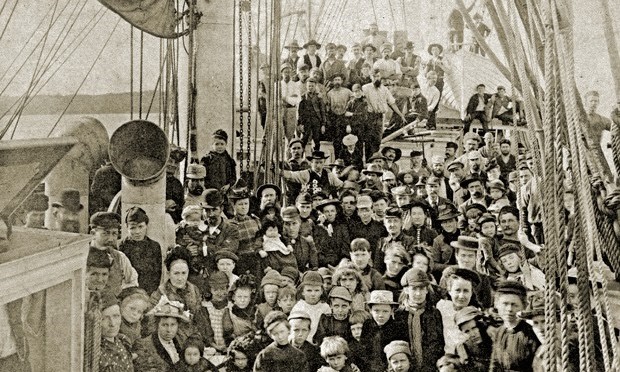In the last two months we have been to two outstanding performances dealing with the story of the Australian colonists who settled in Paraguay at the end of the nineteenth century. In November 2015 we attended the premiere of an opera composed and directed by Michael Sollis and staged by the Griffyn Ensemble. In February of this year we saw All My Love, a play by Anne Brooksbank dramatising the close friendship between two icons of Australian literature, Mary Gilmore and Henry Lawson. This relationship was never to be consummated because Gilmore set her mind and heart on pursuing her own personal Utopia by joining the band of Australians, led by William Lane, who two years earlier, in 1893, had travelled to Paraguay to establish two socialist colonies and begin a new life.
Lane and his followers arrived in a far-away country that had recently endured the bloodiest conflict on South American soil: The War of the Triple Alliance, pitting Paraguay against Brazil, Argentina and Uruguay (1864-70). Paraguay had been considered the country with the most promising future in the region, boasting a passenger railway, ship building for international trade, the first iron foundry in the Southern Cone and an extensive telegraph network. To support this infrastructure, hundreds of European engineers, architects and technicians had been recruited, which contributed to the development of an education system and a program of urban modernization. Consequently, Paraguay was in the process of becoming the most modern and self-reliant country in South America.
Tragically, Paraguay became the victim of a bloodbath of epic proportions. Why? Historical documentation suggests that the principal reasons were its legitimate claims to independence and its pretensions to develop its own model of social and economic development. Statements by top political and military leaders involved in the war against Paraguay confirm their genocidal intent:
How much time, how many men, how many lives and how many resources are needed to end the war, to turn the Paraguayan population into smoke and dust, to kill even the fetuses in the wombs of the women?
The war in Paraguay concluded for the simple reason that we killed all Paraguayans over the age of ten.
It is a sad memory, but it provides the historical context for the arrival of the hardy Australians who reached Paraguay. William Lane and his comrades found a country in ruins where the surviving women and their children were incapable of raising a smile. But Paraguay needed to be repopulated so the Australians received a warm welcome. Lane, Cameron, Cadogan, Kennedy, Gilmore, Wood and the others were the founders of the colonies of New Australia and Cosme, which in due course bequeathed thousands of descendants —Australian and Paraguayan— as well as a rich cultural legacy that belongs to both of our nations.
The expedition that set sail on The Royal Tar on 17 July 1893 from Sydney Harbour provides a solid basis for writing the history of Paraguay-Australian bilateral relations. In the words of the historian Marisa González Oleaga, “They have left us a heritage of dignity and pride. Nobody will ever again recreate the experience of New Australia, but people will always envisage the possibility of new worlds beyond the horizon.” Many years have elapsed since that heroic enterprise, but Utopian ideals continue to inspire men and women throughout the world striving to reach the Light on the Hill.

Today, humanity is facing grave humanitarian crises. Limited resources frustrate endeavours to ameliorate the fate of people in embattled regions. We may draw inspiration from the pilgrims who sailed in The Royal Tar, risking their lives in a quest of a “little Utopia” in a distant land. It is significant that two works about this extraordinary adventure should be staged in Australia at the same time. The message conveyed by Gilmore, Lane and Lawson continues to resonate in the works of talented contemporary Australian artists and writers who remember the idealism and courage of their forebears. And by some mysterious telepathy, the saga of these intrepid settlers has also inspired an Argentinian movie director, Cristian Pauls, to tell their story. In collaboration with Paraguayan partners, the movie is currently in production on the other side of the Pacific.
This efflorescence of interest in the shared history of Australia and Paraguay is not mere coincidence. It is an urgent reminder that we should both work together to keep alive our historical memory. Our artists, poets and writers are telling us that it is our joint responsibility.
Esteban Bedoya is Chargé d’Affaires of Paraguay, Canberra.
